He Pinjing: Challenges in the treatment of urban solid waste under the dual-cycle background-see the micro-knowledge, take plastic waste as an example
"Promoting the formation of a new development pattern with the domestic big cycle as the main body and the domestic and international double cycles mutually promoting each other" is an issue that General Secretary Xi has repeatedly emphasized this year. In this context, He Pinjing, a professor and doctoral supervisor of the School of Environmental Science and Engineering of Tongji University, shared the theme of "Challenges of Urban Solid Waste Governance under the Background of Dual Recycling: Taking Plastic Waste as an Example" at the 2020 (14th) Solid Waste Strategy Forum to deeply analyze the challenges faced by urban solid waste management under the background of dual cycles.

He Pinjing
As the year is about to pass, everyone is paying attention to new problems, new technologies, and new developments. For example, at present, the internationally renowned academic journal "Waste Management" in the field of solid waste is doing a special issue on innovative plastic waste treatment technologies, and the international journal "Bioresource Technology" is also doing a special issue on innovative treatment technologies for urban biomass solid waste.
He Pinjing briefly introduced some of our country’s recent latest policies on solid waste, including the "Announcement on Matters Concerning the Comprehensive Ban on the Import of Solid Waste". our country has transitioned from a partial ban in 2017 to a comprehensive ban on the import of waste in 2020; very important "Several Opinions on Further Promoting the Classification of Domestic Waste" jointly issued by the twelve ministries and commissions of China; and General Secretary Xi once again promised at the Global Climate Summit on December 12 that our country has made some new commitments to climate change.
The figure below is a brief introduction to the double loop. He Pinjing pointed out that the globalization we face in the future will be completely different from the globalization we were once familiar with.
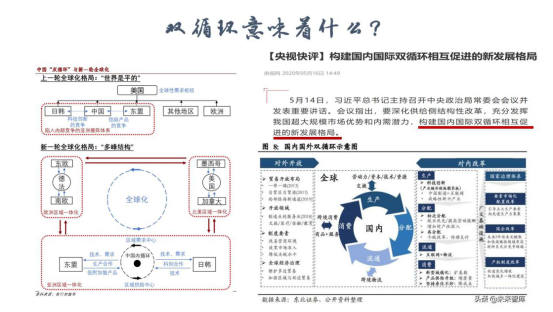
Go back to the history of urban solid waste management. In fact, the punishment for littering has existed since the Shang Dynasty. During the pre-Qin period, there were full-time sanitation workers. During the Tang Dynasty, there was also punishment for littering in the Tang law. During the Song Dynasty, our country had a special sanitation department. It can be seen that waste management has experienced a very long history. The purpose of municipal solid waste treatment has been to ensure environmental safety, so as to achieve the purpose of protecting human health and putting people first. In the foreseeable future, we must also consider the requirements for carbon reduction. What will happen in the future is a question worth considering.
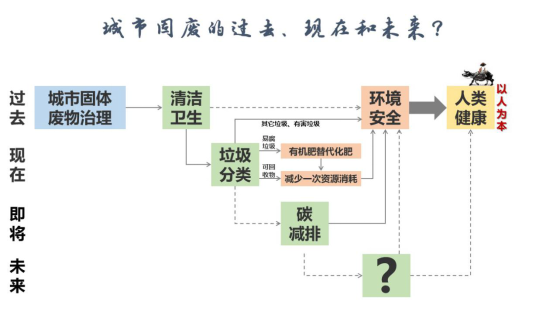
From the above content, He Pinjing focused on the treatment of plastic waste as an example and conducted an in-depth analysis. He introduced that the European Union began to implement the "Packaging and Packaging Waste Directive" in 1994 and implemented the "Plastics Strategy in the European Circular Economy" in 2018. The "Disposable Plastics Directive" was promulgated in 2019. This directive has not yet been implemented due to the epidemic and should be implemented more quickly after the epidemic is over. Generally speaking, EU countries are very concerned about plastic waste.
In 2005, our country implemented the "Environmental Protection Control Standards for Imported Solid Wastes Used as Raw Materials—Waste Plastics", and established standards for waste plastics in imported waste. In 2007, the General Office of the State Council issued the "Notice on Restricting the Production and Sale of Plastic Shopping Bags", which is also a plastic restriction order. In 2017, the import of foreign garbage was partially banned. In 2019, a new plastic restriction order was issued, namely the “Opinions on Further Strengthening the Treatment of Plastic Pollution” at the 10th meeting of the Central Comprehensive Deepening Reform Committee, which pointed out that "the production, sales and use of some plastic products are prohibited and restricted in an orderly manner, actively promote recyclable and easily recyclable and degradable alternative products, increase the supply of green products, standardize the recycling of plastic waste, establish and improve management systems for all links, and orderly and effectively control plastic pollution. "
On April 10, 2020, the National Development and Reform Commission issued the "Catalogue of Prohibited and Restricted Production, Sales and Use of Plastic Products". On April 29, the "Law of the People's Republic of China on the Prevention and Control of Environmental Pollution by Solid Waste" (2020 Revised Edition) was passed into effect. Article 69 of the Solid Waste Law clearly stated that "the state prohibits and restricts the production, sale and use of non-degradable plastic bags and other disposable plastic products in accordance with the law." At present, 20 provinces, cities, and autonomous regions have issued detailed rules or drafts for comments on the implementation of the ban on plastics, including Beijing, Shanghai, Tianjin and other places. On November 24, the "Announcement on Matters Concerning the Total Ban on the Import of Solid Wastes" was issued, prohibiting the import of solid waste in any way and prohibiting the dumping, stacking, and disposal of solid waste outside our country.
What is the problem of plastic waste? Is it a city appearance problem? Is it an environmental problem? Is it a resource problem? Because the production of plastic waste will consume non-renewable resources, such as fossil energy, which will cause unsustainable resources. Is the issue of plastic waste an ecological issue? Is it a safety issue? Or is the issue of plastic waste also the above issues? Only by thinking about these issues can we decide what measures we should take with regard to plastic waste.
If the problem of plastic waste is only a city appearance problem, can the 100% coverage of the garbage removal system guarantee the solution of the plastic waste problem?
If the problem of plastic waste is only an environmental issue, can it be solved by 100% incineration of plastic waste? The harmless treatment rate of urban domestic waste in our country is very high, mainly through incineration and landfill. At present, the amount of municipal solid waste incineration in our country has exceeded the amount of sanitary landfill.
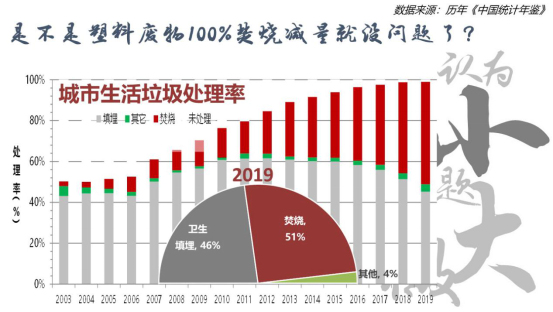
He Pinjing pointed out that from the perspective of recycling plastic waste, a large part of plastic products are recyclable. For example, plastic bottles can be recycled into some basic raw materials, which can be further processed to produce various fabrics. These technologies have matured, so can this solve the problem of plastic waste?\
In fact, the problem of plastic waste is by no means a simple single problem. Plastic is one of the great inventions of mankind in the past century, and it is irreplaceable in our lives. For example, on Double Eleven every year, the garbage station can receive more than 100 tons of packaging waste in one day.
Taking Shanghai as an example, the statistical results of the physical composition of domestic waste in Shanghai for several consecutive years (as shown in the figure below) show that the proportion of plastic waste in the entire domestic waste is increasing, although we have strengthened garbage classification and strengthened the recycling of recyclables. We must face the fact that we are increasingly using plastic products.
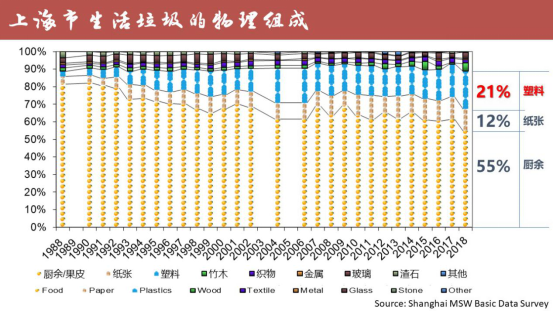
According to a research result of the University of Toronto, the amount of land-sourced plastics discharged into the water environment in 2016 was as high as 19-23 million tons. There are three main factors that have led to the increase in the use of plastic products. One is population growth, the other is economic development, and the third is our existing economy's dependence on fossil resources. According to estimates, even if we reduce plastic production by 5-10%, increase the compliance treatment rate of solid waste to 70-90%, and increase the removal rate of plastic waste in the environment by another 10%, by 2030, the discharge of land-based plastics to the water environment will still be close to double the level in 2016. The problem of plastic pollution is still very serious.
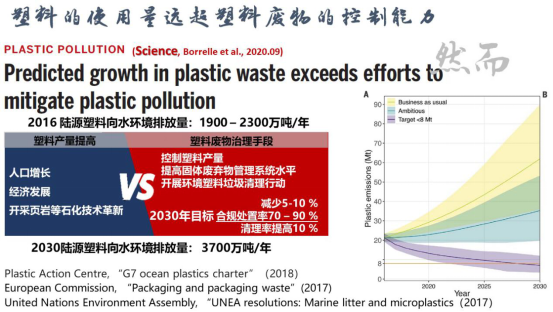
Can plastic fragments be collected 100%? If we cannot completely collect plastic fragments, in the natural environment, plastic fragments will become smaller and smaller, and they will never be collected again.
The following table is the composting standards of some countries in the world, mainly in Europe. Among them, the most stringent is Germany. Plastic particles larger than 2 mm must be less than 5 per thousand. The 2 mm standard is used because the highest standard that can be divided is 2 mm for classification from domestic waste. From these standards, plastic waste is not just a visual pollution problem. At present, our country still lacks such relevant standards and regulations.
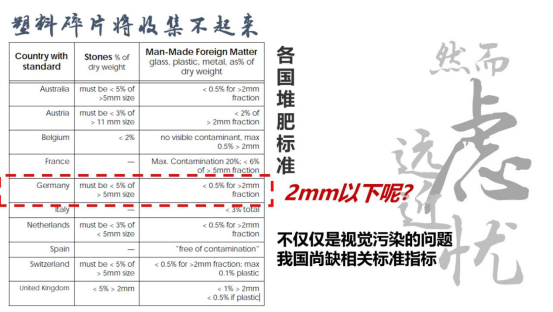
This is some research results in recent years. At present, microplastic pollution is found everywhere, including drinking water, salt, sugar, tea bags, alcoholic beverages, etc., almost everywhere. There are also many reports inferring that, on average, every person in the world eats five grams of plastic particles every week, which is equivalent to a credit card.
In recent years, research has also continued to pay attention to the harm of microplastics pollution, including the impact of microplastics entering the soil system, which will reduce food production. In order to maintain the existing supply of grain or food, it is necessary to use more water, more fertilizers, and various measures. This will further bring about a series of environmental problems, including carbon emissions and over-exploitation of resources.
What happens if microplastics enter the human body? He Pinjing introduced that through simulation experiments on mice, this literature study last year found that after microplastics enter the mice's body, they will cause metabolic disturbances in their nervous system, and also cause intestinal dysfunction, bringing a series of consequences. There are also articles in 2020 to further study the impact of microplastics on the human body after entering the human body. Microplastics can be used as a habitat for microorganisms. After entering the human intestinal system, it will cause a series of adverse consequences. The impact of microplastics on the human body is still in the process of further research.
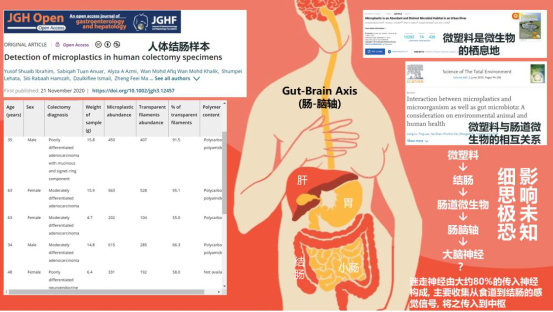
Can solid waste compliant harmless treatment and disposal measures eliminate microplastics? He Pinjing's team did a study. After plastic waste enters the sanitary landfill, it will gradually become smaller after a very complicated process of physical, chemical, and biological interaction. The Chairman of the EU Plastics Control Committee evaluated this article and believed that it was the first officially published document in the field of domestic waste source treatment, indicating that there are a large amount of microplastics in the landfill process and in the leachate.
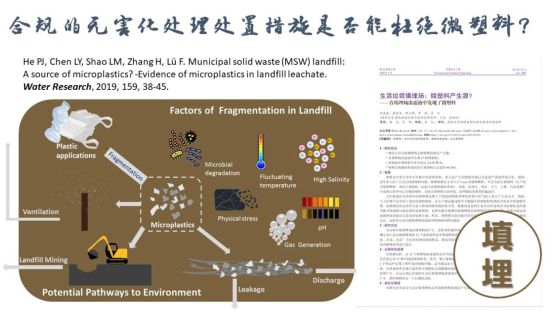
Take a look at the incineration. Incineration will produce slag. The property inspection of slag includes the index of heat loss rate. He Pinjing's team also did some analysis and research and found that microplastics also exist in the slag. At the same time, the team is still studying whether composting, anaerobic digestion and other treatment methods will cause the production of microplastics. In general, microplastics will be produced in various compliant disposal methods or recycling processes.
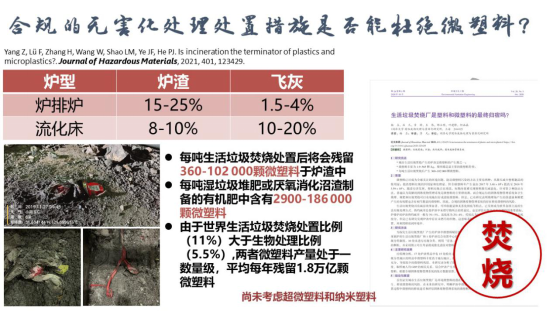
He Pinjing introduced that in the research process, we compared the two technologies of fluidized bed incineration and grate furnace incineration, and also compared the impact on the characteristics of microplastics in slag before and after garbage classification. Taking Shanghai as an example, wet and dry classification uses broken bags in Shanghai. Plastic bags stained with wet garbage enter other garbage. Although the total amount of plastic bags or plastic products incinerated increases, the microplastics in the slag decreases. This interesting finding needs further research to confirm.
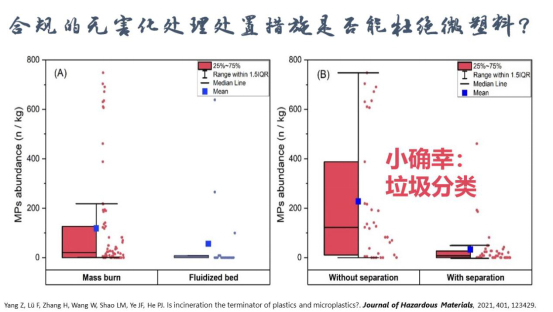
The figure below is a process diagram of microplastics from production to use to the end. Everyone found that after entering the use process, the production of microplastics becomes very complicated, especially after entering the environment, whether it is compliant treatment or illegal disposal, it will bring about a very complicated process.
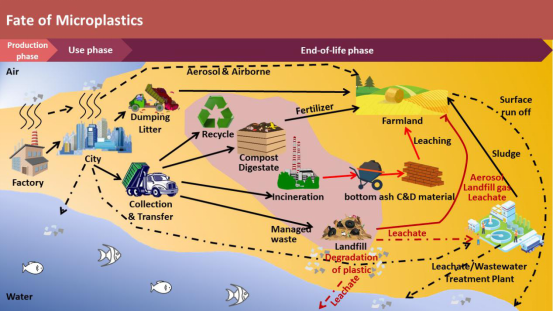
Is microplastics a local issue? An article at the end of 2019 showed that small particles containing microplastics can be transported more than 100 kilometers in the air. He Pinjing's team is also doing research in this area, and the research results are currently being written. The results show that microplastics is by no means a local issue.
So can recycling be used to prevent the production of microplastics? In fact, if plastics are recycled into clothing, a large amount of microplastics will also be produced during the laundry process.
The Shanghai Academy of Environmental Sciences published an article that through research and investigation of water bodies in Shanghai, it helps to analyze the degree of impact of aquatic microplastics on land use. The study found that the annual load of microplastics discharged through WWF (drainage network rainwater overflow) is 8.50E14 p/year, which is about 6 times that of the effluent discharged through the local sewage treatment plant. The concentration level of microplastics in regional water bodies from high to low is: heavy industry>commercial/public/entertainment>agriculture/light industry>agriculture>residential area.
The figure below shows the major contributing industries to global carbon emissions, among which waste ranks fourth. Plastic is also an important contributor to carbon emissions.
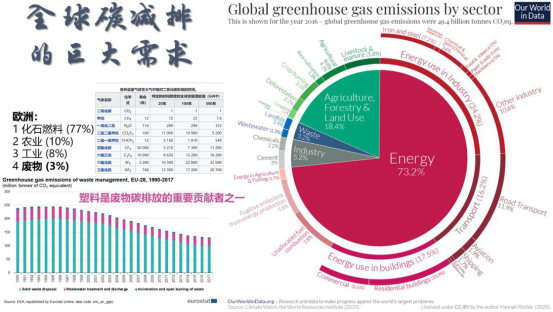
Through the research on the carbon emissions of the entire plastic process, the carbon emissions in the plastic manufacturing process are smaller than the carbon emissions in the treatment process.
Can biodegradable plastics solve the problem? Is the biodegradable plastic really completely degraded? Is it becoming more microplastics? Is there any additive problem? What is the replacement rate of global plastics with biodegradable plastics? How about carbon emissions during the manufacturing process? What is the price? These are all questions to be answered.
Finally, He Pinjing concluded, although it seems that the production of microplastics is inevitable. But one thing is definitely right. It is definitely right to reduce the use of plastics, especially the use of disposable plastic products. He hopes that the industry will jointly think about where to control plastic waste.
